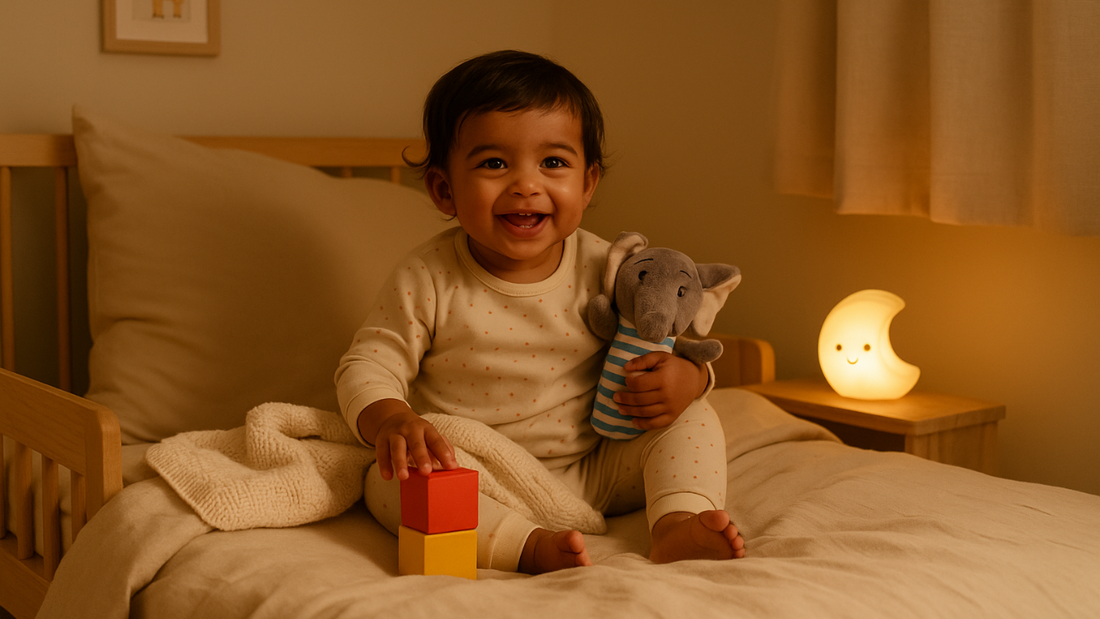
Sleep Changes That Work: From Crib to Bed
LiLLBUDMoving your child from a crib to a bed is a big step, and it can be scary for both parents and toddlers. If your child is getting ready to move out of the crib, is getting close to toddler age, or just wants a "big kid bed," you can help them make the transition go smoothly.
Know When Your Child Is Ready
Every child is different, but there are some signs that they are ready to go from the crib to the bed.
- Getting out of the crib safely or trying to do so
- Showing interest in a "big kid" bed
- Getting too big for the crib mattress or rails
- Showing anger or discomfort in the crib
Most kids make the switch between 18 months and 3.5 years old, but being ready is more important than age.
Get the sleep environment ready
It's important to make a safe and inviting place to sleep:
- Pick the right bed: toddler beds, convertible cribs, or twin beds with guardrails can help with the change.
- Make the room safe for kids by locking the windows, covering the outlets, and securing the furniture. Take away things that could hurt your child that are on the floor.
- Keep things familiar: keep your favorite blankets, stuffed animals, or sleep sacks close by to make you feel better.
- Control the light and noise. A dim nightlight and soft background noise can make toddlers feel safe.
A consistent sleep environment helps you sleep better and lowers your stress levels.
Set a regular bedtime routine
Children know it's time to sleep when they have a set routine, no matter what kind of bed they are in. Add 3 to 5 calming activities, like:
- Time to take a bath
- Reading a book
- Soft music or lullabies that are gentle
- A quick hug or talk about the day
Consistency tells the brain to relax, which makes the new bed feel like part of the normal routine.
Introduce the New Bed Gradually
Moving in one night can be too much for some kids. Think about doing things one step at a time:
- Practice naps: Let your child sleep in the new bed first.
- Daytime exploration: Encourage them to play on the bed during the day to get used to it.
- When transitioning your toddler, consider placing the crib mattress on the floor for a little while or using guardrails on a familiar surface.
The aim here is to create a cozy and enjoyable bed environment—one that feels safe and fun, rather than intimidating or restrictive. It's also important to communicate your expectations clearly and establish gentle boundaries. As your little one adjusts, they’ll definitely appreciate a bit of guidance!
Set Clear Expectations and Gentle Boundaries
As they get used to things, toddlers need help:
- Explain the rules: It's important to stay in bed at bedtime.
- Use positive reinforcement. Praise or sticker charts can help kids learn to sleep on their own.
- When your child wakes up at night, stay calm and respond quickly and softly. Then tell them to go back to bed.
- Don't give them negative attention: long negotiations or scolding can make them want to stay up later.
Being patient and consistent are important.
Deal with sleep regressions in a calm way
Some toddlers may still not want to go to bed or may have sleep regressions even after a smooth transition. Things that often set it off:
- Changes in routine, like going on a trip, getting sick, or having a new sibling
- Milestones in development, like learning to talk, walk, and deal with separation anxiety
Strategies to cope:
- Keep the same place to sleep
-
Revisit the bedtime routine
- Give comfort and reassurance without making new sleep problems worse.
Sleep regressions are usually short-lived and can be dealt with if you are patient.
Celebrate the Big Event
Moving from a crib to a bed is a big step toward being independent. Celebrate little wins:
- Tell your child to stay in bed all night.
- Tell stories about being a "big kid."
- Make going to bed fun and positive
A supportive approach will make your child feel safe, confident, and excited about the new way of sleeping.
Important Points:
- Before going to bed, look for signs that you are ready.
- Make the place where you sleep safe, familiar, and quiet.
- Stick to a bedtime routine that is the same every night.
- Introduce the bed slowly to help you get used to it.
- Set soft limits and stay calm when your child wakes up at night.
- Sleep regressions are normal, so be patient with them.
-
Celebrate freedom and progress.

